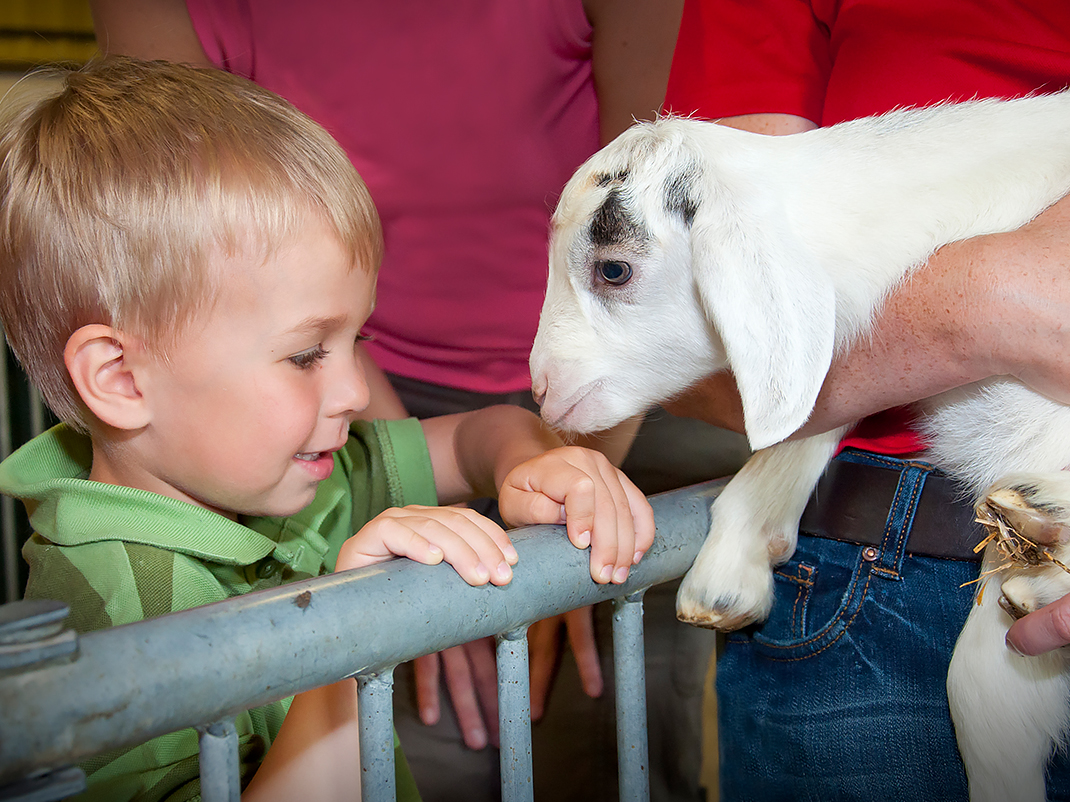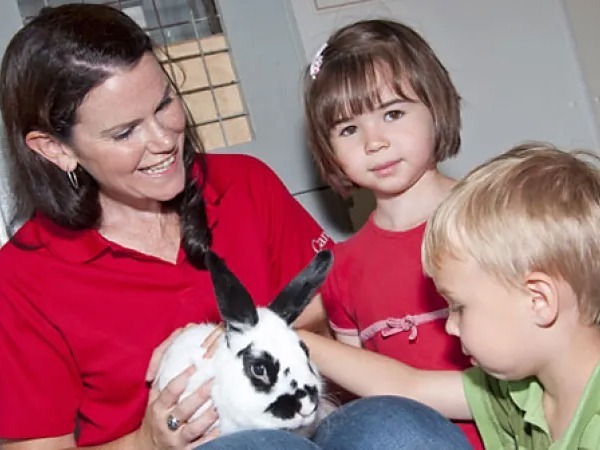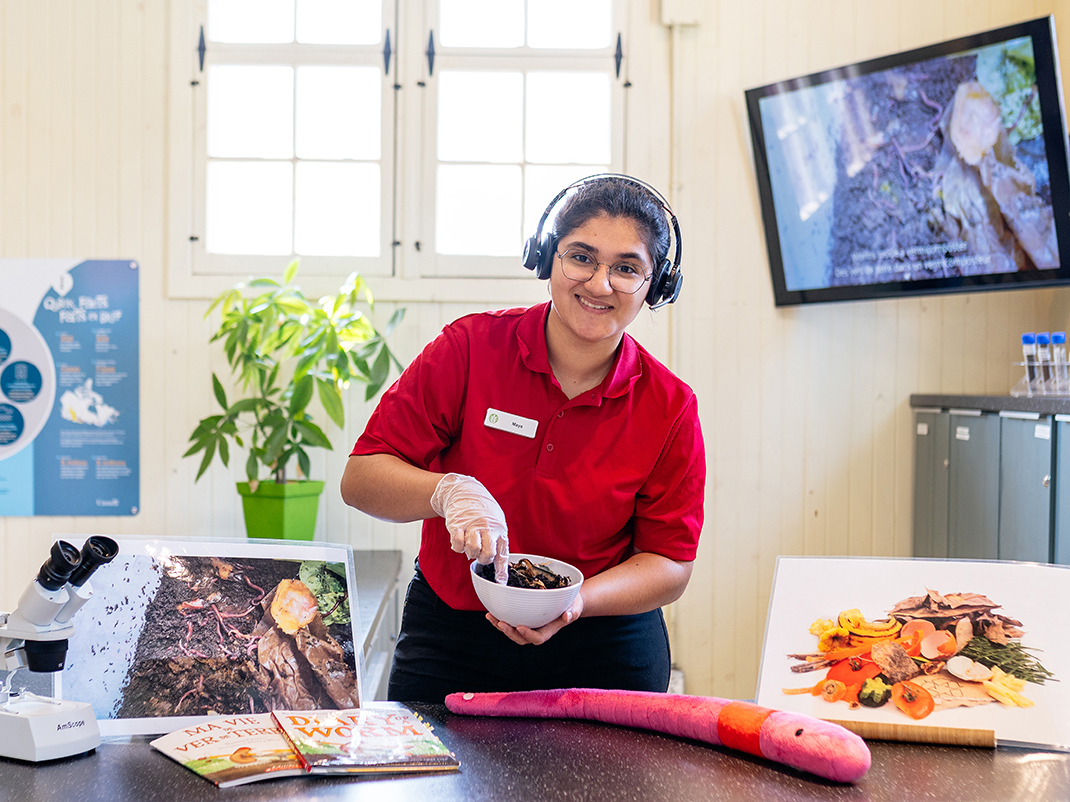Meet the farm animals
Junior and senior kindergarten (Ontario)
Preschool and kindergarten (Quebec)
What do farm animals look like? What are they called? What sounds do they make? How should we look after them? Students answer these questions by playing games and taking part in fun activities.
This lesson plan includes illustrations and pictures of farm animals, suggestions for inquiry and play-based stations, and instructions for games and group activities.

Share :
Play-based learning stations with farm animals
Science and technology
Mathematics
Language
Printable PDFs
Play-based learning stations with farm animals
Multi-disciplinary learning
The following play-based activities offer students the opportunity to explore and investigate various topics related to farm animals. Students will learn about some of the vocabulary, the needs, and the physical characteristics of farm animal. Each suggested activity includes questions to promote inquiry and extend thinking.
Before inviting your students to explore the learning stations, read a story about farm animals to your class. After reading the story, go over the stations with the students. Explain how the stations are connected to farm animals.
Suggestions
- Barnyard Dance! by Sandra Boynton
- The New Baby Calf by Edith Newlin Chase & Barbara Reid
- The Very Happy Hen by Jack Tickle
- Emma’s Eggs by Margriet Ruurs
- Wake up Farm! by Alvin Tresselt
- Farmyard Tales by Stephen Cartwright and Heather Amery
Animal illustration cards
For some of the stations and group activities, you will need the Animal illustration cards from the printable PDFs below.
Print the illustrations and cut them into cards. To make the cards last longer, glue them to a card stock or laminate them.
Memory game
Instructions
For this station, you will need the Animal illustration cards from the printable PDFs below.
- Spread the animal cards face down on a table.
- Students take turns flipping over three cards to find animals that belong to the same family (cow, bull, and calf). If the three flipped cards show animals from the same family, the student gets to keep the cards and plays again. If the animals don’t match, the student flips the card back over, face down, and the next student takes his or her turn.
Note: To make the game easier, remove the baby animals from the card deck. Rather than flipping three cards, students flip two.
Questions for students
- Was it hard to find all three (two) animals in that family? What do we call the type of animal that belongs to this family? Are they pigs, cows, turkeys, rabbits, etc.?
- How could you tell the animals are part of the same family?
- Is there an animal you didn’t recognize? Which one? How can we find out what animal it is?
- In this family, which animal is the adult male (the daddy)? How can you tell? Do you know what this animal is called?
- How can you tell adult animals (the mommies and the daddies) from young ones (babies)? Show me the differences?
What am I called?
Instructions
For this station, you will need the Animal illustration cards from the printable PDFs below.
- Cut the animal names off the bottom of the cards.
- Place the animal illustrations and the name cards on a table.
- Students match up the name to the correct animal.
Suggestion
Younger students may find it hard to learn the name of male, female, and young animals. To simplify this activity, use only the male or female cards. Replace the male or female names with the ones used for the animal family. You will find the names of the families in the Animal illustration cards printable PDF.
- For example, hen and rooster would be replaced by chicken.
Questions for students
- Was it hard to match this animal with its name?
- What do you think this animal is called?
- Which animal do you like best? Why?
- What sound does it make?
- What’s the first letter in your name? Do you see this letter on the table?
Sorting and creating patterns
Instructions
For this station, you will need the Animal illustration cards from the printable PDFs below.
- Place the animal cards on a table.
- Students can sort the cards in many different ways. They can:
- group families together (male, female, and young)
- sort the cards based on the animals’ physical characteristics (for example, animals with feathers, the same number of legs, hooves, hair, beaks, etc.)
- group farm animals based on their gender or age (for example, group the males, female, and young together, etc.)
- Students can create various patterns with the cards. They can create patterns based on:
- the physical characteristics of farm animals (for example, animal with fur/animal with feathers/animal with fur…continued for as long as they want)
- the gender or age of the animals on the cards (for example, animal/adult animal/baby animal/adult … and continue)
Questions for students
- How did you sort out the cards? What do these animals have in common?
- Can you sort the cards differently?
- How can you tell the male from the female and the baby animals? How are they different?
- What pattern did you make? What happens to your pattern if I take this card out?
Farm craft
Materials
- Feathers
- Wool
- Dried corn kernels
- Pompoms
- Cotton balls
- Toilet paper rolls
- Egg cartons
- Popsicle sticks
- Felt
- Play dough
- Paper
- Markers, crayons, or colouring pencils
- Glue
- Scissors
- Pipe cleaners
Instructions
- Place the materials in the centre of a table.
- Students create a farm animal using the available materials or a shelter for their animals
Questions for students
- Why did you choose those materials to make your animal or shelter?
- Does the texture remind you of the animal?
- Would your shelter protect an animal from bad weather?
- Does your animal have eyes? Ears? A tail? Wings?
- Why did you choose to make that animal?
To whom do I belong?
Students have fun guessing which body parts belong to which farm animal. They learn to recognize the physical characteristics of mammals and that, despite similarities, there are many differences between species.
Instructions
For this station, you will need the Animal picture cards from the printable PDFs below.
- Print out the animal and body part pictures in colour (for ease of matching) and cut them into little cards.
- Show the cards to your students and go over the body parts with them.
- Explain that the farm animals featured on the cards all have eyes, ears, a mouth and nose (muzzle), a tail and legs
- The females produce milk from udders for their young
- Ask students to compare their own physical characteristics with those of farm animals. Do we use our body parts in the same way farm animals do? Do we walk on two or four legs? Do we have a tail to swat at flies? Can we move our ears?
- Put the body part cards in the centre of a table or on the floor. Limit the number of participants at this station to six and give each student an animal card.
- Out of the body part cards, students pick the ones that belong to their animal. Students can work alone or together to sort out the cards.
Suggestions
Write the name of the animal behind the body part cards for ease of checking.
Questions for students
- How did you know that body part was from that animal?
- Do all the feet (eyes, tails, ears, noses or udders) look the same?
- Which body part was the hardest to match to the animal?
- How are the cow’s ears different from your ears?
How a chick hatches
Materials
- Copies of How a chick hatches printable PDF
- Markers, crayons, or colouring pencils
- Scissors
- Stapler
Instructions
-
- Make one-sided copies of the 3 pages containing the booklet.
- Place the material at the centre of a table.
- Show students the booklet. Explain that the boxes on the pages are out of order. Invite students to colour the images and cut the boxes out.
- Ask students to sort out the boxes and place them in the right order to tell a story. If they need help, invite the students to study the images and provide them with clues as needed.
- For example, in which image is the eggshell intact? Should this image come first or last in the story?
- When the students have put the boxes in the right order, staple the pages together to make a booklet.
- Read the story from the booklet to your students.
Questions for students
- Where do baby birds come from?
- What do we call a baby chicken?
- How long does it take for a chick to grow inside an egg?
- How does the hen keep the egg warm?
- Does it take a long time for the chick to crack open the egg and hatch? Is it hard work?
- Are the egg shells hard?
How a chick hatches
Please see the How a chick hatches printable PDF at the bottom of the page.
Science and technology
Senses at the farm
Group activity
During circle time, talk about the five senses and how they help us experience a farm visit. Ask the students questions. Use the animal illustration cards if they need ideas. What noises would they hear if they went to a farm? What would they smell? What would they see? What would they feel by touching the animals? What level of voice should they use if they visit a farm?
Animal family game
Group activity
This is a fun game with many different variations, depending on grade/group level. This flexible game can be short or long, played once or repeated, played in small groups or as a class. It introduces the participants to farm animals and their physical characteristics.
Instructions
For this station, you will need the Animal illustration cards from the printable PDFs below.
- Have the students sit or stand in a circle. Explain that the class will play a farm matching game together. Each student will receive a card with the name and illustration of an animal. The animal will either be an adult male (daddy), an adult female (mommy), or a baby. Hold up a couple of cards to show examples.
- Explain that you will call out a category. If they have an animal that belongs in that category, they should move to the middle of the circle and hold up their card so everyone can see it. Remind the students that if their card does not fit into the category, they should stay on the outside of the circle. Give them an example.
- Once you’ve passed out the cards and everyone has had a chance to look at their card, ask if anyone is confused about the animal they have.
- Stand/sit in the middle of the circle and call out a category. For example, call the rabbits to the centre of the circle. The students who come to the centre of circle should tell the class which rabbit they are (male, female, or young) and/or hold up their card and give the other students a chance to see it. Then once they return to the outside of the circle, call the cows to the centre. You can repeat this for as long as you like using different category options:
- Different animals (cow, chicken, horse, sheep, goat, pig, rabbit, turkey, duck, and honeybees)
- Young animals, or all the female animals, or all the male animals
- Mammals, birds, or insects
- Animals that have wool
- Animals that hop
- Animals that have wings
- Animals that have hooves
Suggestions
For an advanced version of this game, instruct students to walk around the classroom or outside.
- When you call out a category, they have to sort into groups. For example, ask them to find and link arms with their animal family (the chick, hen, and rooster would try to find each other).
- Remind students to hold their card out in front, so that other students can see it
- Students have the option to make small groups or large groups
- After each category is called, ask the students to move around again before you call the next category. Possible categories include:
- Animals that have the same number of legs
- Animals that have the same type of hair, fur, wool or feathers
- Animals that eat the same type of food
- Animals that are male, female or young (babies)
A fun way to end the game is to call out the category “any animal that lives on a farm.” Students should all end up in one big group.
This game can also be played as an elimination game. The slowest group is eliminated. This option works best with small groups and repetition (for example, link up with your animal family).
Rabbit mirrors
Group activity
The purpose of this activity is to help students realize that, just like us, rabbits react to their environment by modifying their behaviour and movements.
Instructions
- Ask students to share how they would react to various situations. For example, how would they behave if they were afraid? Would they ask their parents to pick them up? Would they hide? Explain that like us, rabbits react to their environment. When observing a rabbit, we can tell by its behaviour if it is afraid, curious, or even hungry. With the students, go over a rabbit’s response to various stimuli. For example, if a rabbit is angry, it will stamp its feet. Other responses might be the following:
- Fear—remains perfectly still curiosity—wrinkles and wiggles nose fear—flattens ears back on its head listening—ears stand straight up and move to and fro
- Relaxed—lies in “superman” position, with front and back legs stretched out
- Playful—hops around playful—digs in straw or dirt
- Group students in pairs. In each pair, have one student play a rabbit, the other a mirror. Each “rabbit” moves like a rabbit while staying in one spot, and each “mirror” copies the rabbit’s movements as closely as possible. Rabbits and mirrors then switch roles.
Suggestion
To start the activity, you can play the role of the rabbit and have all the students mirror your actions.
Mathematics
Measuring a horse
Group activity
Horses are measured in hands (palm width), a unit that is equivalent to ten centimetres. Students practice measuring each other, using hands. A horse’s height is measured from the ground to its withers, which correspond to the shoulders on a human. Be sure to measure the students the same way.
Instructions
- Have each student trace their hand on a piece of paper, then cut it out.
- There are two ways students can measure each other’s height using hands. They can:
- Tape hands on the wall one on top of another to create a height chart
- Lie down and have other students come place hands beside them to measure how many hands they measure.
Suggestions
- Use the hand cut-outs to measure other things in the classroom
- Use the hand cut-outs to decorate the classroom
Language
Farm songs
Please see the Farm songs printable PDF at the bottom of the page.
Animal stories
Group activity
Instructions
For this station, you will need the Animal illustration cards from the printable PDFs below.
- Have students sit in a circle—each holding an animal card.
- One student starts a story with a sentence about the animal featured on his or her card. This is a great time to review key words and phrases like “beginning,” “next,” “later,” “one time,” “finally”, etc.
- Going around the circle, each student adds a sentence that brings their animal into the story.
Printable PDFs
- Farm songs (PDF, 340 KB)
- How a chick hatches (PDF, 700 KB)
- Animal illustration cards (PDF, 2 MB)
- Animal picture cards (PDF, 10 MB)
- To whom to I belong: Answer sheet (PDF, 4 MB)
You may also be interested in

Barnyard buddies field trip
Children will meet sheep, goats, pigs, chickens, and rabbits as they discover the sights, sounds, and smells of the farm!

AgVenture: Buddy rabbit
Students will meet a real rabbit from the farm and pet its soft fur, then learn all about these cute creatures through games and investigations.

Virtual field trips
Bring the museum to your classroom with bilingual, curriculum-linked programs for all grade levels that allow your students to discover various STEM topics.

